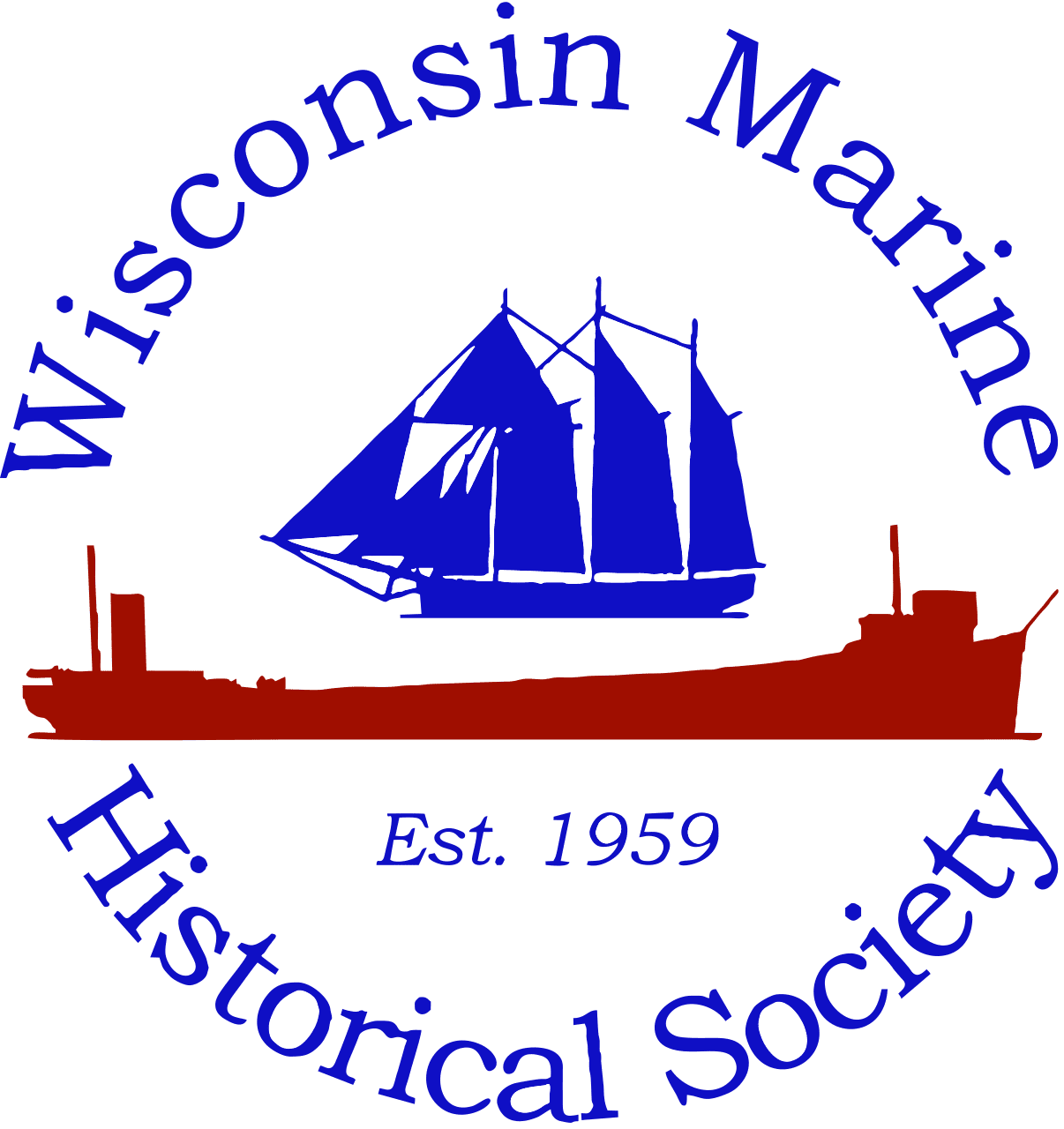By James Heinz
On April 15, 1912, the ocean liner TITANIC sank in the North Atlantic. And on September 1, 1985, a ship built on the Great Lakes found the most famous shipwreck in the world.
Photo at top of page: KNORR being built at DeFoe
According to WMHS files, the research vessel KNORR was launched August 21, 1968 at the DeFoe Shipbuilding Company in Bay City, Michigan, for the U.S. Navy, who leased her to the Woods Hole Oceanographic Institute. She was 2,518 gross tons, 279 feet long and 46 feet wide. At a speed of 11 knots she had a range of 12,000 miles with a crew of 22 and 36 scientists and technicians.
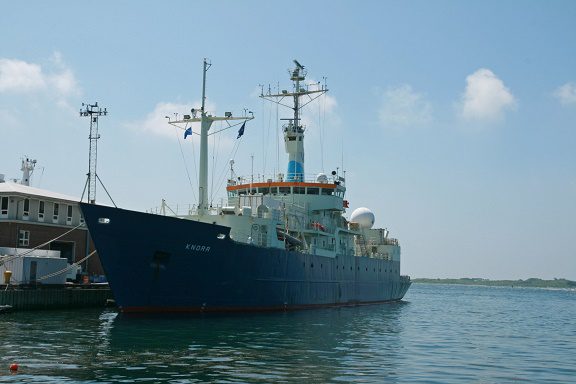
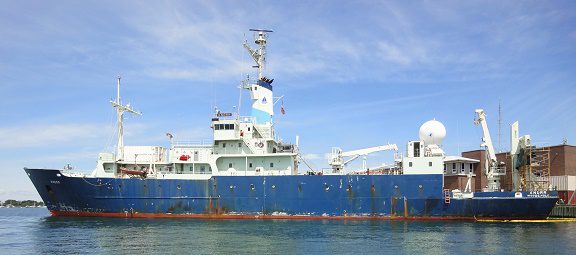
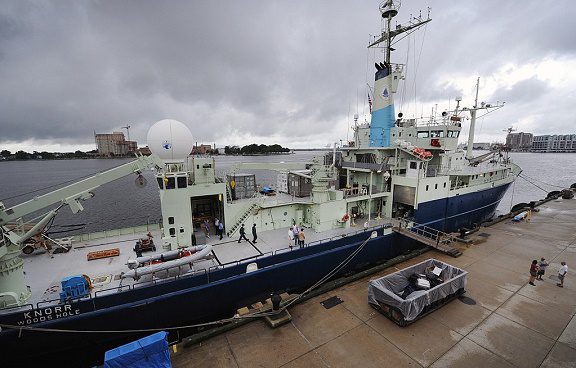
She was originally built with cycloidal propulsion. Cycloidal propulsion looks like an egg beater hung vertically under the hull of the ship. It is used in ships that have to maintain an exact position, like oil drilling ships, or on ships that change direction often, like tugboats or ferries. It also eliminates the need for a rudder.
Wikipedia states: “The ship has anti-roll tanks and an ice-strengthened bow enabling her to work in all of the world’s oceans. She can take a crew of 22 and a scientific party of 34 to sea for as long as 60 days. Knorr was designed to accommodate a wide range of oceanographic tasks, with two instrument hangars and eight scientific work areas; a fully equipped machine shop; three oceanographic winches; and two cranes. Knorr is equipped with sophisticated navigation and satellite communication systems, as well as a dynamic positioning system that allows the ship to move in any direction and to maintain a fixed position in high winds and rough seas.”
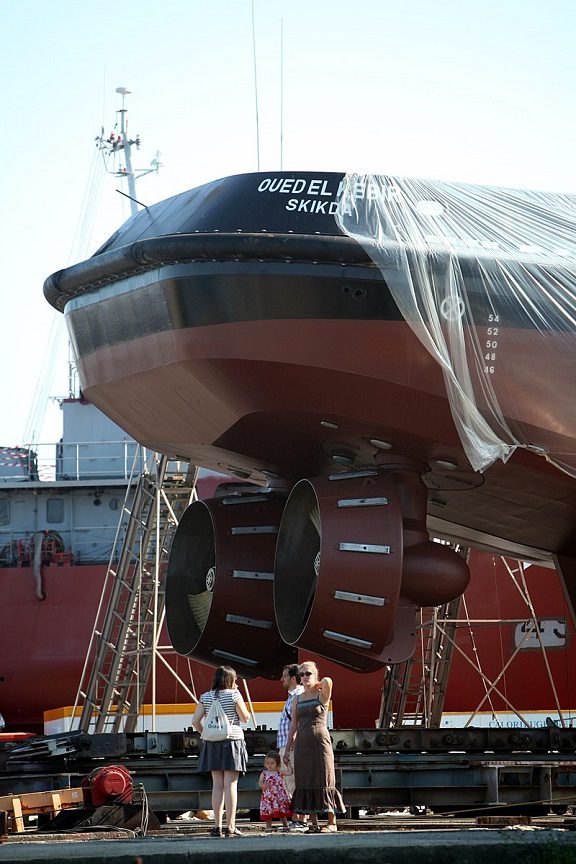
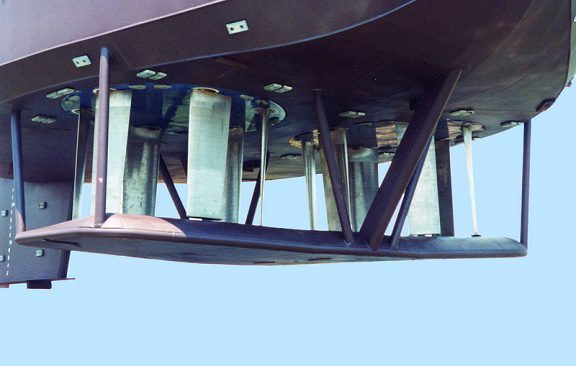
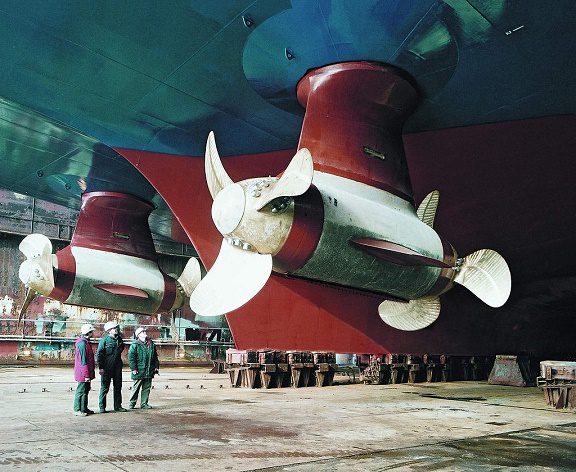
A 1991 refit added 10 feet to her midsection and replaced the cycloidal propulsion with two azimuthing stern thrusters and a retractable bow thruster. An azimuthing thruster is a propeller that hangs under the ship and can be rotated in any direction, providing both propulsion and direction.
The search for the TITANIC began as a Cold War cover story created by the U.S. Navy to conceal a search for the wreckage of two US Navy submarines lost in the Atlantic in the 1960s. After the subs were located and their wreckage evaluated, KNORR began searching for the TITANIC. The search for the subs had shown that it was easier to find the debris field that formed as they sank than the wrecks themselves. KNORR therefore towed a sled containing lights and cameras until the debris field was found, and then followed the debris field to the wreck of the TITANIC.
KNORR was transferred to the Mexican Navy in 2016 and renamed RIO TECOLUTLA. In her career she has travelled over a million miles.
Four DeFoe built ships were lost in World War II, two of which have been mentioned here before: the Coast Guard cutter ESCANABA https://wmhs.org/on-this-day-june-13-1943-the-coast-guard-cutter-escanaba-sinks , and PC 1129 https://wmhs.org/built-in-the-great-lakes-sunk-by-a-kamikaze-drone-boat/
Defoe also built the presidential yacht LENORE https://wmhs.org/presidents-royalty-elvis-and-marilyn-monroe/ , the USS O’CALLHAN https://wmhs.org/the-uss-ocallahan-was-launched/ , and the Milwaukee fireboat DELUGE https://wmhs.org/boats-that-kept-milwaukee-safe-chapter-4/ .
DeFoe Shipbuilding went out of business in 1976.
Photos courtesy of NAVSOURCE.ORG
——————————– James Heinz is the Wisconsin Marine Historical Society’s acquisitions director. He became interested in maritime history as a kid watching Jacques Cousteau’s adventures on TV. He was a Great Lakes wreck diver until three episodes of the bends forced him to retire from diving. He was a University of Wisconsin – Milwaukee police officer for thirty years. He regularly flies either a Cessna 152 or 172
